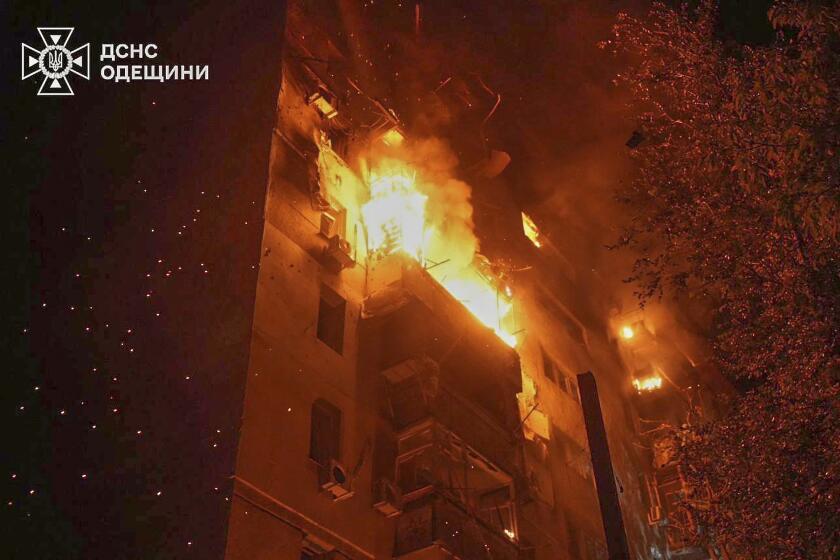Escalation of Attacks and New Challenges for Ukraine
Russia has launched a large-scale attack on Ukraine, targeting the country with hundreds of drones and missiles during the early hours of Saturday. This assault marks a significant escalation in the ongoing conflict, which has now lasted over three years. The attacks have resulted in at least one death and have further dimmed hopes for a breakthrough in efforts to bring an end to the war.
Ukrainian President Volodymyr Zelensky shared details about the scale of the attack on social media platform X. He reported that Russia fired more than 300 drones and over 30 cruise missiles. The strikes were part of a broader campaign aimed at weakening Ukrainian defenses and infrastructure.
One of the most severe incidents occurred in Odesa, a key Black Sea port city. According to the city’s mayor, Hennadii Trukhanov, Russian forces attacked the city with over 20 drones and a missile. One person was killed, and five others were rescued after a fire broke out in a residential high-rise building. In addition to the casualties, six other individuals were injured, including a child. Critical infrastructure in Ukraine’s northeastern Sumy region was also damaged during the attack.
Zelensky expressed gratitude to international leaders who have supported Ukraine’s defense initiatives. These efforts include joint weapons production, drone manufacturing, and the supply of air defense systems. He emphasized the importance of these agreements in strengthening Ukraine’s ability to defend itself against continued aggression.
Intensified Bombing Campaigns
The recent attacks are part of a growing trend of long-range bombardments by Russia. Analysts note that the number of drones used in a single night has surpassed the total used during entire months in 2024. On July 8, Russia reportedly launched over 700 drones in a single day, setting a new record.
In response to the attacks, Russia’s Defense Ministry claimed it shot down 71 Ukrainian drones overnight. Moscow Mayor Sergei Sobyanin also reported that 13 drones were intercepted as they approached the Russian capital.
Despite these efforts, the frequency and intensity of the attacks continue to rise, raising concerns about the potential for even greater damage in the coming weeks.
New Allegations of Deportation
In addition to the military actions, Ukraine’s foreign minister, Andrii Sybiha, accused Russia of deporting Ukrainian citizens into Georgia. He alleged that many of those deported are former prisoners who have been sent across the southern border instead of being returned to Ukraine.
According to Sybiha, dozens of individuals, many without proper documentation, have been left stranded in transit zones in Georgia. He called on the international community to address this issue, but there has been no immediate response from Moscow.
These allegations add another layer of complexity to the already tense relationship between the two countries. The situation highlights the humanitarian challenges faced by civilians caught in the crossfire of the ongoing conflict.
Broader Implications
The increasing use of drones and missiles by Russia reflects a shift in tactics, with a focus on overwhelming Ukrainian defenses through sheer volume. This strategy has forced Ukraine to rely heavily on international support to maintain its air defense capabilities.
As the conflict continues, the international community is closely monitoring developments. The situation remains volatile, with both sides preparing for further escalation. For now, the attacks serve as a stark reminder of the ongoing dangers facing Ukraine and its people.






